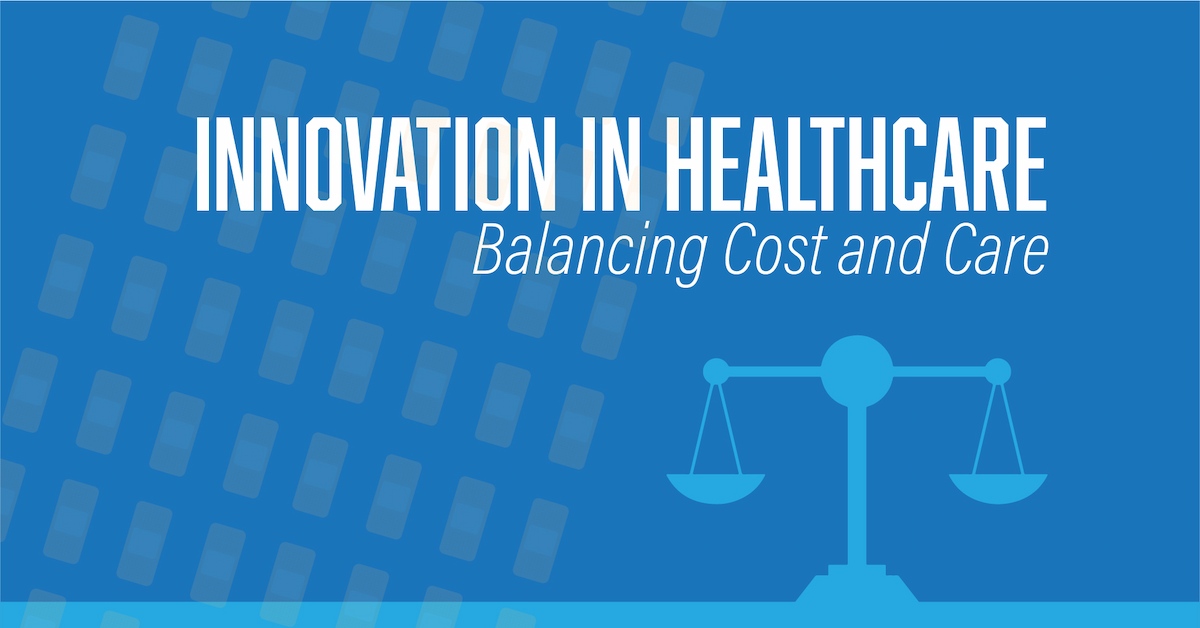 Some of the most incredible human innovations have led to saving or improving millions of lives, from antibiotics to x-rays. In today's world, however, healing the sick does not take place in a vacuum. Together with medical care, society has to consider medical costs, which have been steadily rising over the past decades. In this post, we'll look at some of the ways that innovations can help or harm the bottom line at a hospital or facility.
Some of the most incredible human innovations have led to saving or improving millions of lives, from antibiotics to x-rays. In today's world, however, healing the sick does not take place in a vacuum. Together with medical care, society has to consider medical costs, which have been steadily rising over the past decades. In this post, we'll look at some of the ways that innovations can help or harm the bottom line at a hospital or facility.
Some innovations seem to add more work rather than lessen the burden. Innovations that are additive, that is, that add steps or complexity to current protocols, can lead to higher health care costs down the line due to increased staff and time requirements. Innovations that are substitutive, those that actually replace protocols or reconfigure workflows, can be cost saving, or at the very least, cost neutral. When evaluating an additive innovation, a hospital or facility will have to weigh the benefits over the investment, tending to chose innovations that can provide meaningful, long-term improvements in patient care.
Even those innovations that claim to be substitutive may not sufficiently replace existing technology, requiring a performance overlap that can be difficult to financially justify. While all innovations in healthcare seek to satisfy a customer need, some do so more economically than others. Some innovations provide an alternative to a "non-inferior" process already in place providing incremental gains with substantial price increases. Until the innovation can provide more than these incremental gains, it will have difficulty finding traction in healthcare in anything but the most well-funded facilities.
One of the most significant innovations in healthcare has been the shift from volume-based purchasing to value-based purchasing. This complete overhaul of patient and financial management has taken over a decade to implement, and even though it is not yet universal, has played a significant role in bringing down healthcare costs for millions of Americans. Another overhaul is currently impacting the field of infection control and prevention. Initiated by reimbursement pressures from the Center for Medicare and Medicaid Services (CMS), hospitals and facilities are now fine-tuning patient treatment to prevent as many hospital-acquired infections as possible, opening the doors to many innovations that can meet the coveted "triple aim."
Innovations that satisfy the "triple aim" have the greatest chances of being adopted at a hospital or facility. These innovations 1) improve patient experience, 2) improve patient health, and 3) reduce the cost of care. Put more simply, these new products or procedures must demonstrate clinical improvement as well as opportunities to cut costs. After the initial investment, the innovation must achieve significantly better patient outcomes without requiring on-going costs in staff, time, or financial outlay.
Among those innovations are EPA-registered biocidal surfaces, materials that continuously eradicate organic contamination from the patient area, preventing transmission of disease and promoting better patient outcomes. They not only improve the patient experience and population health, they also reduce costs, all by preventing infections. Hospitals do not have the burden of costs associated with those infections, which are not eligible for reimbursement from CMS and payers, but they also increase productivity by achieving faster discharges for patients and serving more of their population. Not all healthcare innovations can achieve this triple aim - the challenge is to get these products in front of the right decisions-makers.
There are barriers that hospital and facilities face when considering adoption of innovations. Departmental decision-making can make it difficult to adopt an innovation that would have facility-wide benefits. Departmental budgeting erects a further barrier to innovation adoption. Any single department usually cannot take on the burden of the up-front costs of implementing a new technology without affecting their annual budget, even if that investment ends up paying for itself within a few years. Significant coordination between clinical departments as well as facility operations becomes necessary, requiring a facility-wide commitment that can be logistically difficult. It is up to the Value Analysis Committee or similar decision-makers to recognize those innovations that are optional and those innovations that are essential.


